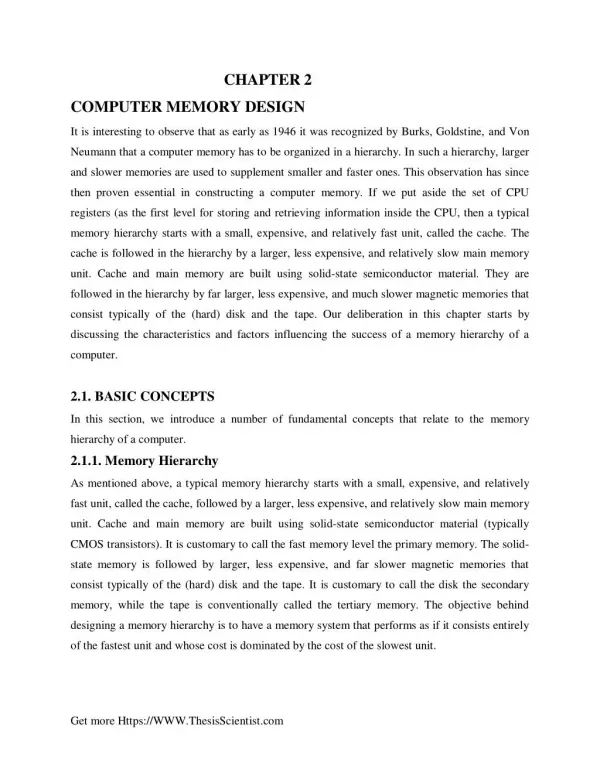COMPUTER MEMORY DESIGN
As mentioned above, a typical memory hierarchy starts with a small, expensive, and relatively fast unit, called the cache, followed by a larger, less expensive, and relatively slow main memory unit. Cache and main memory are built using solid-state semiconductor material (typically CMOS transistors). It is customary to call the fast memory level the primary memory. The solid-state memory is followed by larger, less expensive, and far slower magnetic memories that consist typically of the (hard) disk and the tape. It is customary to call the disk the secondary memory, while the tape is conventionally called the tertiary memory. The objective behind designing a memory hierarchy is to have a memory system that performs as if it consists entirely of the fastest unit and whose cost is dominated by the cost of the slowest unit. www.thesisscientist.com
★
★
★
★
★
360 views • 26 slides
